Maverick Medical Education provides quality training and teaching for medical providers looking to expand their skill set in pain relief techniques and with the increasingly vital technology of Point of Care Ultrasound. A component of our educational practices involves eLearning, something we were already on the cutting edge of providing before the pandemic caused a major shift in the learning arena. While we already have strong systems in place, we are constantly learning and tweaking our courses to better meet the needs of our students. While we are returning to our regular lives in many degrees, eLearning is here to stay. According to Shift, it is poised to become a $280 billion industry. By staying abreast of the trends out there, we can help providers in giving the best care in their practices.
1. Mobility- eLearning cannot simply be done remotely in this day and age. To be truly cutting edge and best meet the needs of students, it must be as mobile as possible and function with ease and intuitiveness. Maverick Medical Education course modules are accessible from any internet-connected device, an additional perk for our students in the medical field. Maximizing time on unpredictable shifts is a great advantage many want to capitalize on.
2. Different Needs- Every student is going to learn at a different rate, as every student has different needs while they are looking through their material. Our platform makes it easy for students to pause, process, research more, and relearn so they can feel confident with the material before moving forward.
3. Student Information- Some platforms use high levels of Artificial Intelligence to gather information about student performance, needs, attention, and other helpful clues for teaching. Some are even adaptive to steer students’ learning in a specific way based on how they answered certain questions. While there will be growth to some degree in our learning modules, we look at many factors to develop the best courses for our students and adapt as needed.
4. Data-Driven- There are several ways to interpret and use data in education, just like in the medical field. If there are gaps in what we are teaching, we can look at some of the data to show us where those gaps are. By measuring data, we are constantly improving the resources and materials we provide for our students. Additionally, data can tell us where we need to supplement in-person for some of our courses, especially when a method or technique may simply be better suited for hands-on practice.
5. Microlearning- Our modules are broken down into parts and manageable portions to accommodate schedules and learning styles. This way, once enrolled in our courses, someone could choose the best system for them regarding either watching large portions and processing all at once or dividing the course into smaller sections to fit their needs. And it is vital that it is “flexible, that is, it can be done through any device and at any time.”
6. Blended Learning- Arguably the best part of most of our courses is our blended learning. Not all learning should be remote, especially when students are learning techniques they will implement in person. Our flipped classroom model, where informative learning takes place ahead of time and in-person practicums take place at the end of the course, increases the success our students experience because they can ask questions about content they have already learned and get the repetition needed to become proficient at clinical skills.
To begin work on the mobile learning portion of one of our courses, see our calendar. We provide training in several different areas and enjoy helping our students work through the content at home as well as once we assemble in person to develop their techniques. If you have questions, contact us today.

